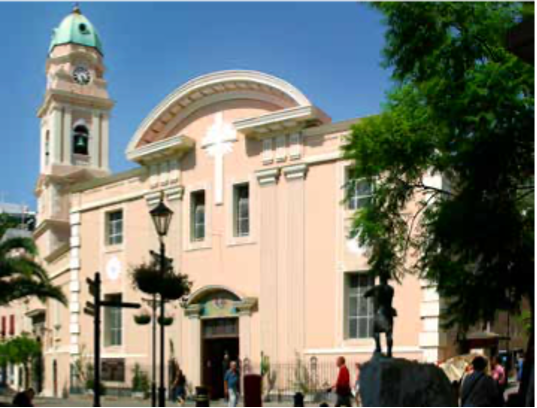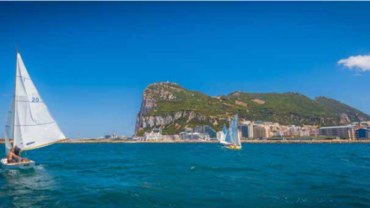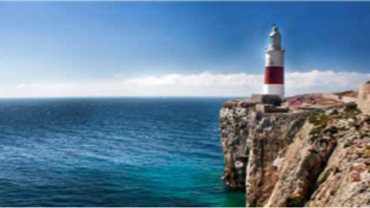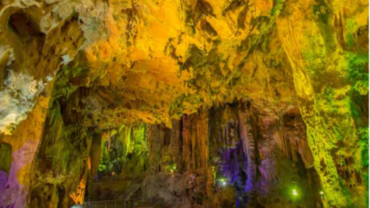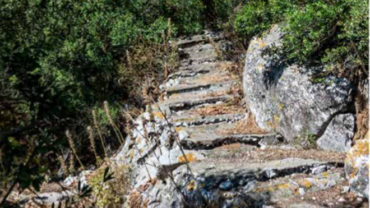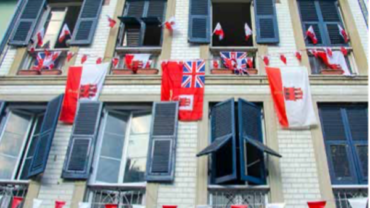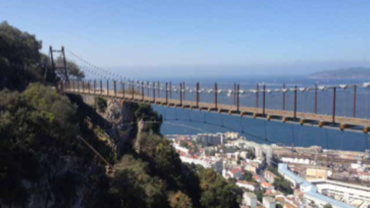Religious Interest Tourism in Gibraltar
Anglican Cathedral of the Holy Trinity
Despite its deceptively Moorish appearance, ‘Holy Trinity’ was not built until 1825. It was consecrated in 1838 at a service attended by Queen Adelaide, widow of William IV. Among those buried here is General Sir George Don under whose direction the cathedral was erected during his posting as Lieutenant Governor of Gibraltar (1814 – 1832). The Holy Trinity Anglican church was raised to cathedral status in 1842, becoming the centre for Anglicans in all Europe except the British Isles. Today its diocese is called ‘The Diocese of Gibraltar in Europe’.
Cathedral of St Mary the Crowned
Situated on the site of the chief mosque in the centre of the city, some of the early structure can still be appreciated; Spanish and Moorish architectural tradition. It was converted into a Roman Catholic Church soon after 1462. Subsequent to the tremendous damage caused by the Spanish and French for almost four years during the Great Siege (1779-1783) the major repairs including shaving off almost a quarter of the length of the building which then allowed Main Street to run straight through. This building is therefore considerably smaller than the ‘Spanish Church’ (as the early British called it) was. It became the seat of Roman Catholic Bishops but not the ‘Bishop of Gibraltar’ until eventually Rome elevated the church to cathedral status in 1926.
Church of Our Lady of Sorrows
Our Lady of Sorrows Church is a Roman Catholic church in Gibraltar. It is in the heart of the old village at Catalan Bay on the east side of the Rock overlooking the sea. The Church’s statue of Our Lady of Sorrows is carried in procession to the Catalan Bay beach each September when the Bishop of Gibraltar blesses the sea in the village’s main religious festival.
Flemish and Great Synagogue
Gibraltar has a Jewish community dating back some 300 years and the Great Synagogue in Engineer Lane has the distinction of being one of the oldest on the Iberian Peninsula, dating back to 1724. Guided tours of the beautiful Flemish synagogue, located in Line Wall Road, can be arranged. There are a total of four synagogues in Gibraltar. The British Garrison of Gibraltar was dependent on Morocco for food and supplies, difficult to ship out from England.
That dependence became crucial whenever Spain imposed a blockade on the colony. Jewish merchants from Tetouan in Morocco came to settle soon after Gibraltar was first occupied by British forces in 1704. They were joined here by other Jews active in the Morocco trade – from London, Leghorn and Amsterdam. The modern Jewish Community of Gibraltar may date back from the eighteenth century, even though Jews had lived on the Rock in the fourteenth century and Marranos from Andalusia had also moved here later.
Hindu Temple
Inaugurated in 2000, the Hindu Temple located at Engineer Lane, serves Gibraltar’s Hindu population of approximately 600. The first merchants in Gibraltar from British India are thought to have arrived in 1870 from the area around Hyderabad taking advantage of the new Suez Canal. The establishment in Gibraltar of such traders and craftsmen was by courtesy or permission of the Military Governor of the day and there was no difference as to status or rights between a trader from, say, Genoa and one from Hyderabad.
Ibrahim al Ibrahim Mosque
This beautiful example of Muslim architecture has been standing at Europa Point since 1997. It was paid for by the late King Fahad Abdul Aziz of Saudi Arabia and caters for the Muslim population of Gibraltar, most of who originate from Morocco. The mosque is a beautiful addition to this unique site. When lit up at night it stands out dramatically and is visible from miles away.
The majority of Moroccans arrived in Gibraltar after Franco closed the frontier in 1969, taking posts in public services that managed construction, property and service operations around the naval dockyard. Some established a number of interesting retail outlets which still sell Moroccan groceries and or handicrafts. Nowadays the Muslim population form part of Gibraltar’s diverse community.
Jehova’s Witnesses’ Kingdom Hall
There are two very active congregations of Jehovah’s Witnesses sharing the same Kingdom Hall; one has meetings in English and the other in Spanish. The Kingdom Hall was relocated recently from Wellington Front to Europort Road.
Jews’ Gate Cemetery
An old Jewish Cemetery, used up until 1848, tucked away behind the trees, a fascinating piece of history that reflects the important role the Jewish people have played in moulding Gibraltar’s history.
King’s Chapel
Inside, beneath the colours of several British regiments, lie the remains of the wife of the Spanish governor of 1648, together with those of British governors O’Hara and Campbell, laid to rest in 1802 and 1813 respectively. An oasis of peace next to the busy Main Street, open to the public, it started as the Roman Catholic chapel to the Franciscan Friary in 1532. The date of 1560 by the entrance probably refers to the major repairs and new bell tower built after the pirate raid of 1540.
Methodist Church
The Methodist Church in Gibraltar was founded by a group of “soldier preachers’ in the early months of the year 1769. The first permanent meeting place was the home of Sgt. Major Ince who was himself a Methodist preacher and was to become famous for his work on the Upper Galleries. Despite great difficulties, the Church grew, and in 1804 the first Methodist Minister was appointed, charged with the care of both service and civilian members of the society.
In 1809 the first church was built in Prince Edward’s Road upon the site of Sgt. Major Ince’s army quarter. Later a manse and school were added. In the middle years of the 19th century Methodist work spread from Gibraltar into Southern Spain where both church and schools were established. In the early 1890’s part of the school in Gibraltar was converted into a recreation club for the soldiers and sailors stationed on the ‘Rock’ who had previously availed themselves of the ‘home from home’ provided by a succession of Ministers and members of the Methodist community. In 1898 the social work of the Church expanded with the opening of the ‘Welcome Soldiers and Sailors Home’ at what was then No.6 Church Street the site of the old Eastern Telegraph offices. In 1933 the ‘Welcome’ removed to its present site at No.297 Main Street.
During the years from 1898 to the advent of World War π the ‘Welcome’ served thousands of service personnel of all faiths and of none. During these years also the Methodist Church in Spain was greatly strengthened by the support of Methodists in Gibraltar. After World War π the old ‘Welcome’ became a ‘Wesley House’ and the social work among the service personnel of all nations was continued and extended.
In 1956 the church in Prince Edward’s Road was sold along with the manse and the present building was reconstructed to house a church, church parlour, quiet room, restaurant, etc,.
During recent years the Church and its fellowship has become the spiritual home not only of Methodists but of many other Free-Church personnel stationed or living in and around Gibraltar. Visitors to the Rock have always been accorded a warm welcome and have found their holidays enhanced by participating in Church activities. Also, expatriates living in Gibraltar and Spain have joined the fellowship along with Gibraltarian Methodists. Wesley is also the British Sailors Society’s Chaplaincy to the Merchant Navy.
There is now a flourishing congregation and a large house group, as well as the ‘Carpenter’s Arms”, an alcohol-free bar lounge. The lounge is part of the outreach to the whole community replacing the restaurant. The Church also plays its part in Ecumenical activities.
Sacred Heart Church
Sacred Heart Church is a beautiful Gothic structure from the 1800s that has been lovingly looked after and is found in the upper part of the old town. It is located on one of the busy narrow roads which lead to the Nature Reserve, Upper Rock. The exterior of the building is imposing but beautiful, with a slight resemblance to the Notre Dame is Paris but only has one tower as the family who generously built it seemingly ran out of money during construction. The inside is peaceful and beautiful and the little courtyard outside has a little garden with a grotto devoted to the Virgin Mary, specifically Our Lady of Lourdes. Amongst the parish priests of this church was Charles Caruana who went on to be the Roman Catholic Bishop of Gibraltar between 1998 and 2010.
Shrine of Our Lady of Europe
Located at the southern end of The Rock, this shrine was originally a mosque and converted into a chapel by the Christians in 1462. The light that was kept burning in a tower above the chapel was the original Gibraltar lighthouse. Although the shrine was plundered and pillaged by the pirate Red Beard, its most valuable treasure – the 15th century statue of the Virgin and Child survived – is still venerated there to this day.
There is a museum at the Shrine that depicts its long and tumultuous history. A growing revival in following to Our Lady of Europe commenced in the 1960s and has gathered momentum. In 2009, Gibraltar celebrated the 700th anniversary of devotion to Our Lady of Europe. His Holiness the Pope gave the Shrine the Golden Rose, the highest Papal award for any shrine.
St Andrew’s Church
Throughout the 150 years since St Andrew’s opened, there has been a Presbyterian presence in Gibraltar. In the mid nineteenth century, Scottish regiments were an integral part of the British army presence on the Rock, but official indifference prevented those posted to Gibraltar practising their own religious tradition. In the 1840s a group of Scottish expatriates began the fundraising, which resulted in the opening of St Andrew’s Church on May 30th 1854.
St Joseph’s Parish Church
In 1863 St Joseph’s Parish Church was built in the south district of the Rock. It was financed by a Maltese merchant called Mateos.
St Theresa’s Church
St. Theresa’s Church is a Catholic church in Gibraltar. It is located in northeastern Gibraltar, along Devil’s Tower Road. Former priests at the church include Bernard Devlin who went on to be the Roman Catholic Bishop of Gibraltar. The foundation stone of the refurbished church was laid in 1992 by Bishop Devlin. St. Theresa’s had formally become a parish in 1974 when Devlin became Parish priest. However, Mass has been celebrated for “parishioners” since the end of World War II.
The Cityline Church Gibraltar
The Cityline Church Gibraltar, an Evangelical Christian Church, founded in Gibraltar on the summer of 2004, on the 16th of January, 2005, we opened our first premises situated at an upper town street, known also as “calle comedia”.



